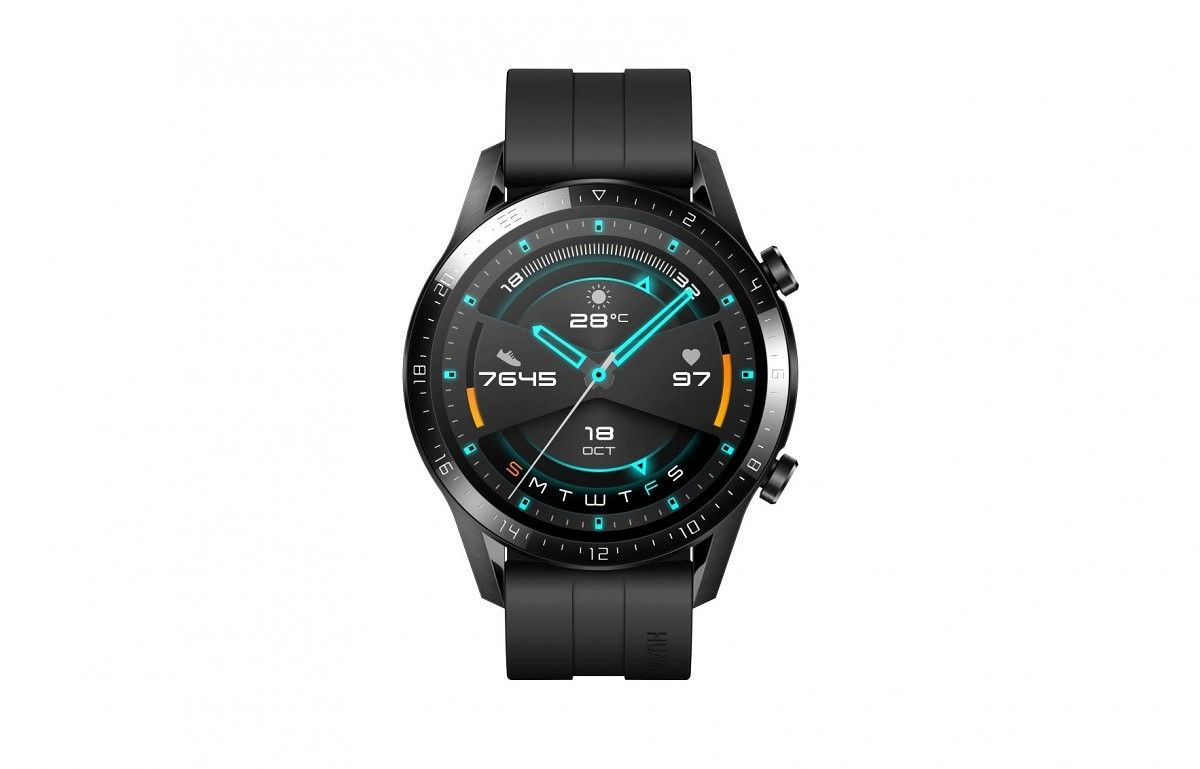While Huawei has witnessed strong growth in homeland China, they have been slowly recovering from the damage done due to the U.S. government’s executive order barring them from engaging with American companies. As a result of having its Android license revoked, the launches of Huawei’s new smartphones including the premium Mate 30 series was met with a lukewarm response despite packing in excellent hardware. Relatively, Huawei’s ecosystem for accessories has not been as hampered since it is not dependent on Android and the company is today launching a new smartwatch – the Huawei Watch GT 2 – powered by Kirin A1 chip in India.
Huawei launched the Watch GT 2 globally along with the Huawei Mate 30 series back in September this year as an updated version of the Watch GT, which was announced earlier this year. The Huawei Watch GT 2 comes with a similar outer design and display but packs in an upgraded HiSilicon Kirin A1, a chipset is designed dedicated for wearables and can be used across a variety of them. The purpose of the Kirin A1 chip is to bring Bluetooth 5.1 and BLE 5.1 at the same time while minimizing the power consumption of the accessory it is powering.




In terms of design, the Huawei Watch GT 2 comes in two dial sizes – 42mm and 46mm. Both of these have a round AMOLED display but the larger one has a 1.39-inch AMOLED display with a resolution of 454×454 while the smaller one has a 1.2-inch display with a resolution of 390×390 pixels. The capacities of the battery inside these also vary between the watches with the 46mm using a 455mAh battery while the 42mm variant using a 215mAh battery. Thus, the claimed battery lives of the two variants also differ with the larger one claimed to last two weeks while the smaller one lasting only half of that i.e. a single week. That might reduce further with the AOD.


Huawei Watch 42mm, Khakhi Leather and Rose Gold Milanese straps
In terms of software, the Huawei Watch GT 2 runs the company’s own LiteOS, which also runs the older version. The smartwatch also gets the ability to apply custom watchfaces besides tracing 15 different types of workout activities with support for VO2 tracking. Additionally, there’s 2GB of onboard storage that should help users store nearly 500 MP3 tracks and apart from pairing a Bluetooth headset to the watch, you can also enjoy music from the tiny speaker on it.
In terms of connectivity, the Huawei Watch 2 gets both Bluetooth 5.1 and BLE 5.1, thanks to the Kirin A1 chip. This allows for connectivity at a distance of 150 meters and for perspective, that’s twice the width of a regular soccer field. Additionally, the’s in-built dual-frequency GPS for positioning.
There are four color options for both the variants. The 46mm variant has three options for the dial – Matte Black, Titanium Grey, and Pebble Brown – and the 42mm comes only with a Night Black dial. Each of these comes with individual strap options:
- 46mm
- Titanium Grey Metal Strap
- Orange Fluoroelastomer Strap
- Brown Leather Strap
- Black Fluoroelastomer Strap
- 42mm
- Khaki Leather Strap
- Cyan Fluoroelastomer Strap
- Rose Gold Milanese Strap
- Black Fluoroelastomer Strap
Huawei Watch GT 2 Specifications
| Specs |
46mm Huawei Watch GT 2 |
42mm Huawei Watch GT 2 |
| Display |
1.39-inch 454×454 AMOLED display |
1.2-inch 390×390 AMOLED display |
| SOC |
Kirin A1 |
Kirin A1 |
| Battery |
455 mAh |
215 mAh |
| Connectivity |
Bluetooth v5.1, Wi-Fi, GPS |
Bluetooth v5.1, Wi-Fi, GPS |
| Health Features |
Heart rate, sleep tracking, stress monitor, breathing guidance, 15 fitness modes, dual-frequency, VO2 |
Heart rate, sleep tracking, stress monitor, breathing guidance, 15 fitness modes, dual-frequency, VO2 |
| Water Resistance |
50 meters water-resistant, not IP-rated |
50 meters water-resistant, not IP-rated |
| Storage Capacity |
2GB |
2GB |
| Software Version |
LiteOS |
LiteOS |
Price & Availability
The Huawei Watch GT 2 will be available in India via Amazon, Flipkart, Huawei’s online store, and offline stores starting December 19, 2019. The pre-sale goes live starting December 12, and early buyers will get the Huawei FreeLace Bluetooth headset worth ₹6,999.
The 42mm variant will be priced at ₹14,999 whereas the larger 46mm variant has three options, each priced differently. The 46mm Black Sport is priced at ₹15,990, Leather Sport for ₹17,990, and the Titanium Grey for ₹21,990.
The watch is more or less the same as the recently launched Honor Magic Watch 2 with the Honor smartwatch having a larger, 4GB onboard storage.
The post Huawei Watch GT 2 with two-week battery life and Kirin A1 chip launched in India appeared first on xda-developers.
from xda-developers https://ift.tt/365CYyg
via
IFTTT

















